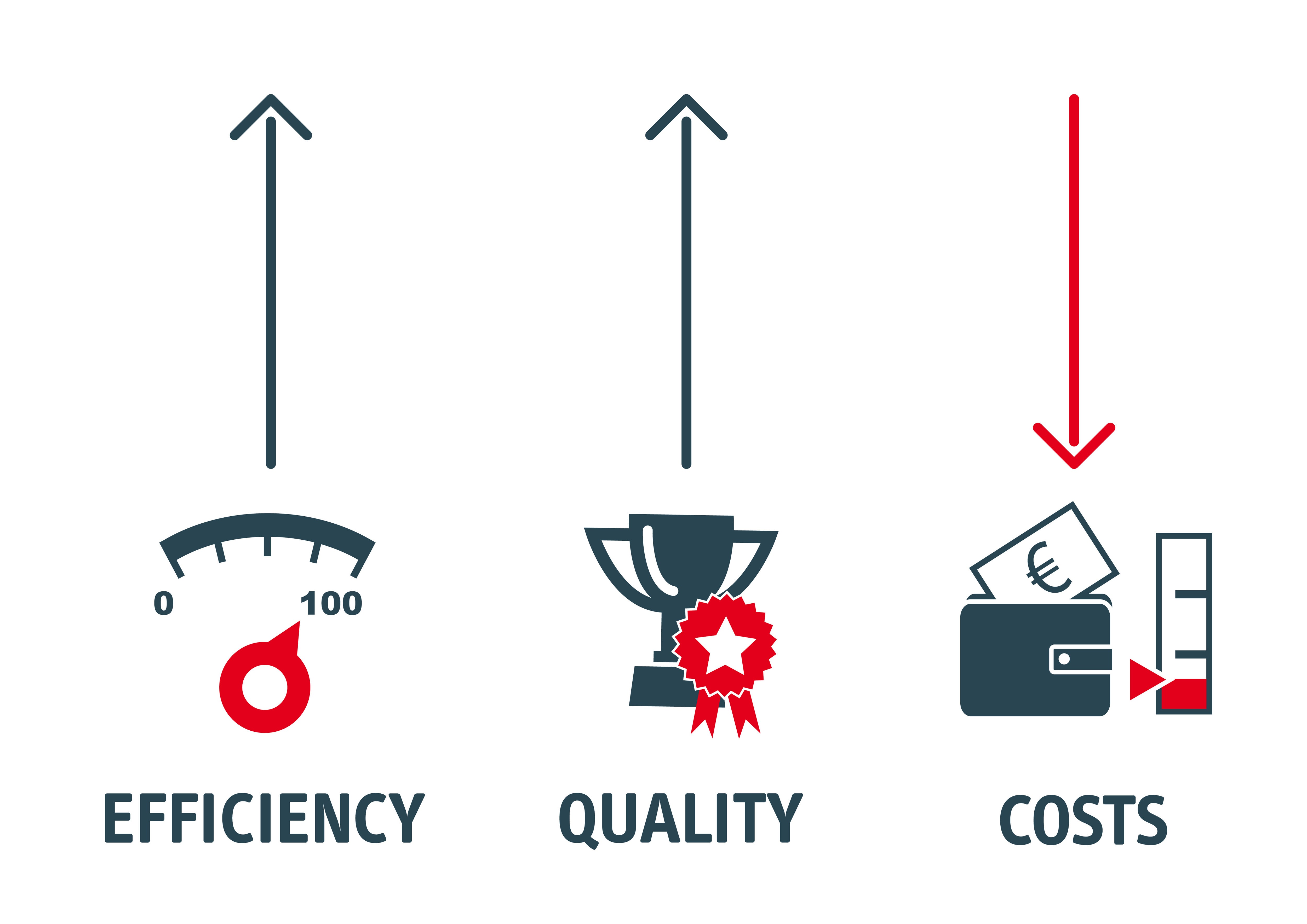Krisana Antharith / Shutterstock.com
Healthy societies foster freedom of thought and freedom of expression. We can make the world a better place through our ideas, and this requires us to share them. It is in this spirit that I offer today's discussion.
Can you rationalize discrimination?
I explain my thinking with a series of hypotheses. You may agree or not with any of them, but at least you'll understand my thought process.
My point here is to show how an organization could rationalize only hiring and promoting a certain type of employee: young white males. It is easier for me to accept a business rationale than the idea that hiring managers are discriminatory bigots and racists. But, ultimately, any organization that adopts this approach will create more problems than they avoided.
Hypothesis 1
It is economically rational for companies to consider their total costs when hiring and promoting employees. These costs can include brand and reputation impacts associated with the composition of a company's workforce. There is a strong argument that having diverse employees leads to better business outcomes (although hard data demonstrating causation is thin on the ground). Furthermore, companies that lack diversity risk alienating stakeholders.
There is a strong argument that having diverse employees leads to better business outcomes (although hard data demonstrating causation is thin on the ground).
Furthermore, companies that lack diversity risk
alienating stakeholders.
Hypothesis 2
Some employees cost their companies more than others even though they perform the same work. Costs here include not just an employee's salary and benefits, but also the risks and friction associated with the company managing that employee. It takes time and costs money to respond to employee concerns, complaints, and lawsuits. Here are several examples.
- Employees may oppose the company pursuing legal business with customers they object to, which could include any "out-of-favor" group or industry. We sometimes see this in younger employees or those who simply ma have more of their idealism intact. For as many opinions as individuals have about the world, some employees expect the company's business to reflect their opinions. This is understandable, but the attendant controversy is costly. Either the company voluntarily reduces its business, or it risks losing employees and customers who disagree with its decision not to cut off other customers.
- Whenever an individual is promoted, you can expect some employees to think that other, more qualified, individuals were overlooked. Because individuals' perception of their own performance is biased, any merit-oriented organization will suffer from concerns about these decisions. This puts companies in no-win situations: They either let the issue blow over, which means living with a certain number of disgruntled employees, or they give reasons why the non-promoted persons were not as qualified, making them and their promoters doubly unhappy.
It is necessary and appropriate for individuals to raise legitimate concerns about discrimination. ... But because humans are complex and varied, the safeguards themselves create opportunities for mischief.
- Next, because individuals' understanding of their own versus others' relative work contributions is incomplete, any merit-oriented organization will suffer from concerns about unequal pay. Paying two individuals differently for what appears to be similar work is unequal pay, so complaints are easy to make. Many complaints are justified. But responding to such complaints is fraught with risk. Companies either demonstrate that individuals' market value and how their contributions differ, demotivating the less valuable employee, or they avoid the argument by simply adjusting pay to eliminate gaps, demotivating the employees making greater contributions.
- Lastly, we have strong laws protecting many groups against unlawful discrimination. In the United States, companies may not discriminate on the basis of race, color, sex, or age, among other things. Call these groups "protected classes." Protected classes can have different costs, as I explain below.
It is necessary and appropriate for individuals to raise legitimate concerns about discrimination. This helps keep companies honest. But because humans are complex and varied, the safeguards themselves create opportunities for mischief. Here's how.
Although most people are honest and ethical, some percentage is not. Behavioral economics predicts that when rewards for cheating exist, some number of people always cheat. They take advantage of loopholes to gain a personal advantage. A dishonest employee can put considerable pressure on their employer by claiming discrimination even where none exists. If even a few employees in protected classes exploit legal protection to obtain negotiation leverage, promotions, or settlements, companies' costs rise for all employees in that class.
Hypothesis 3
Some people are dishonest, and a few bad apples cause harm to all the rest. If you think that all employees are completely altruistic all the time and would never take an action that personally benefits them at the cost of their colleagues, I guess you can stop here. But if you have observed that people sometimes behave selfishly and dishonestly, read on.
Let's assume unethical behavior is evenly distributed across all groups. Protected classes have more opportunities to exploit the laws precisely because they have laws protecting them. This means that some employees come with higher implicit total costs than others. For example:
- Women as a group spend fewer hours in paid work than men on average. This is because they spend more time on unpaid family-related tasks, and because women have traditionally taken more maternity leave than men paternity leave. A pay gap that relates to fewer hours worked is still unequal pay on its face, however, which gives room to complaints.
- Employees respond differently to adverse employment decisions in my experience. Some accept they could do better and try to improve. Others claim any bad outcome must be the result of discrimination and complain accordingly. No company fires a protected-class employee without carefully considering the risk of a lawsuit.
- A similar calculation occurs on the part of employers considering adverse actions against over 40-year-old employees. Although it is relatively easy to avoid an age discrimination claim, doing so requires advance planning and limits companies' flexibility. Hence, over-40 employees have a relatively higher cost from this perspective as well.
If new employees, women, historically underrepresented minorities, and everyone over 40 is relatively riskier and hence more expensive, who does that leave?

Hypothesis 4
The sweet spot consists of white men in their 30s who do not otherwise fall in a protected class. They have been with the company for 5–10 years. By then you know the cultural fit is good. If employees have lasted that long, they usually navigate the workplace well and so are less likely to complain. They also have enough experience to be productive at their jobs but have not had decades of annual salary increases that make them expensive just with the passage of time.
Considering each of the factors above, white men in their 30s appear to be the employees least likely to complain and cause friction for their companies. Some of you will be saying, "That's right, and it's because they have the least to complain about." That may be entirely true. But if white men complain less on average, it could also be because they have fewer laws protecting them. That is, they are among the only groups it is safe to openly discriminate against. Either way, they generate lower total costs to their employers.
Should you take any of this as an argument in favor of hiring more white men? Not at all. It is an observation that promoting diversity comes with a cost to companies because of the laws that favor protected classes and the fact that some individuals will seek to exploit those laws. This may help explain why it has taken longer to develop diverse workforces than everyone expected considering the obvious social and reputation benefits to doing so.
Cost-effectiveness isn't the bottom line
Problems arise when this mentality is scaled. Organizations that look at the bottom line and decide that diverse candidates are costly also need to acknowledge the risk they are undertaking.
Some of the qualified women, minorities, and older workers you don’t hire will notice and file EEOC charges. Instead of baseless claims, the employer will have actual, direct discrimination claims to deal with, which tend to be much more expensive, both in litigation fees and fines, and also in reputational losses, among current and prospective employees as well as customers.
But ignoring financial incentives won't work
Considering all this, can we do anything to improve the situation? One option is to keep raising the social costs on companies that do not promote diversity quickly enough. This makes it easier for companies to justify paying overall higher costs to compensate for occasional bad actors. We may also consider raising the costs on those individuals who make false claims, because they artificially raise the costs of the entire protected class.
What probably won't work is ignoring companies' financial incentives when they evaluate how expensive different employees really are.
Be well.
Disclaimer: The information in any resource in this website should not be construed as legal advice or as a legal opinion on specific facts, and should not be considered representing the views of its authors, its sponsors, and/or ACC. These resources are not intended as a definitive statement on the subject addressed. Rather, they are intended to serve as a tool providing practical guidance and references for the busy in-house practitioner and other readers.




